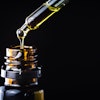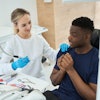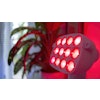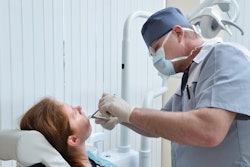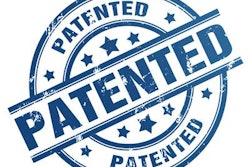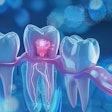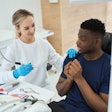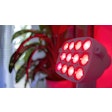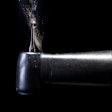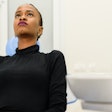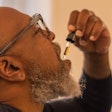
When we think of using lasers in our practices, we think of using class IV surgical lasers that enable us to cut and remove hard and soft tissue. There is, however, a separate class of lasers that give us a completely unique property known as photobiomodulation (PBM). This is the new term for what we used to call low-level laser therapy, phototherapy, biostimulation, cold lasers, or soft lasers.
The word photobiomodulation can be broken down as follows:
- Photo = Light
- Bio = A biological effect
- Modulation = A response to light that can be either a stimulation or inhibition of cell growth
 Mel Burchman, DDS.
Mel Burchman, DDS.The use of PBM therapy delivers many beneficial therapeutic outcomes for our patients, including, but not limited to, the alleviation of pain or inflammation, immunomodulation, and promotion of wound healing and tissue regeneration.
The largest current users of PBM are physical therapists, chiropractors, and veterinarians. They prominently feature the benefits of this technology in their marketing to attract patients seeking pain relief. Because of this, their patients are very familiar with PBM technology, even if it is called another name.
Unfortunately, our profession is lagging behind. I am dedicated to making 2020 the year that dentists begin the full-scale adoption of PBM and become more widely known among healthcare providers and consumers as leaders in pain reduction, tissue healing, and using PBM as an alternative to addictive opioid drugs.
My "why" for this mission is not only because of my 20 years of firsthand experience in treating patients with PBM with amazing results, but because I have personally experienced the tragedy of losing a loved one to opioid addiction.
With that said, here are nine common applications for a PBM laser used by a properly trained dentist or hygienist:
- Oral mucositis
- Temporomandibular joint (TMJ) and facial pain
- Tooth extractions
- Orthodontic discomfort
- Stimulating hard- and soft-tissue growth
- Postimplant surgery
- Dental trauma
- Periodontal surgery
- Endodontics
The investment in a PBM-specific laser device does not have to be expensive. In fact, prices range from approximately $2,000 to 25,000. If you do some research, you can probably find one that suits your budget and your intention for use as well.
In my opinion, PBM therapy is perfect for the hygiene department. However, you should always check with your dental board to determine whether your hygienists can become the champions of pain relief and tissue healing of your practice.
When it comes to insurance reimbursement, the U.S. lags far behind Canada and Europe. Here in the U.S., we can usually submit twice for "palliative treatment" with about an $80 reimbursement from most dental plans.
My experience has been that most patients don't mind paying out of pocket for additional treatment because it can dramatically improve their quality of life. Many times, I don't charge the patient, as PBM therapy builds priceless trust and loyalty. If you want to bill the patient's medical insurance, Thor Photomedicine, a leading manufacturer of PBM equipment, provides excellent information on its website.
How do you obtain the training necessary to become a proficient PBM therapy practitioner? The next Academy of Laser Dentistry Annual Conference, set for April 2-4 in San Diego, will feature a comprehensive track of unbiased PBM lectures and hands-on workshops. I am honored to be sharing instructor duties with world-renowned PBM educators such as Gerry Ross, DDS, and Arun Darbar, BDS. I hope to see you there.
Mel Burchman, DDS, is the president of the Academy of Laser Dentistry and began using lasers in 1999. He currently uses eight lasers in his clinical practice. You can contact Dr. Burchman at [email protected].
